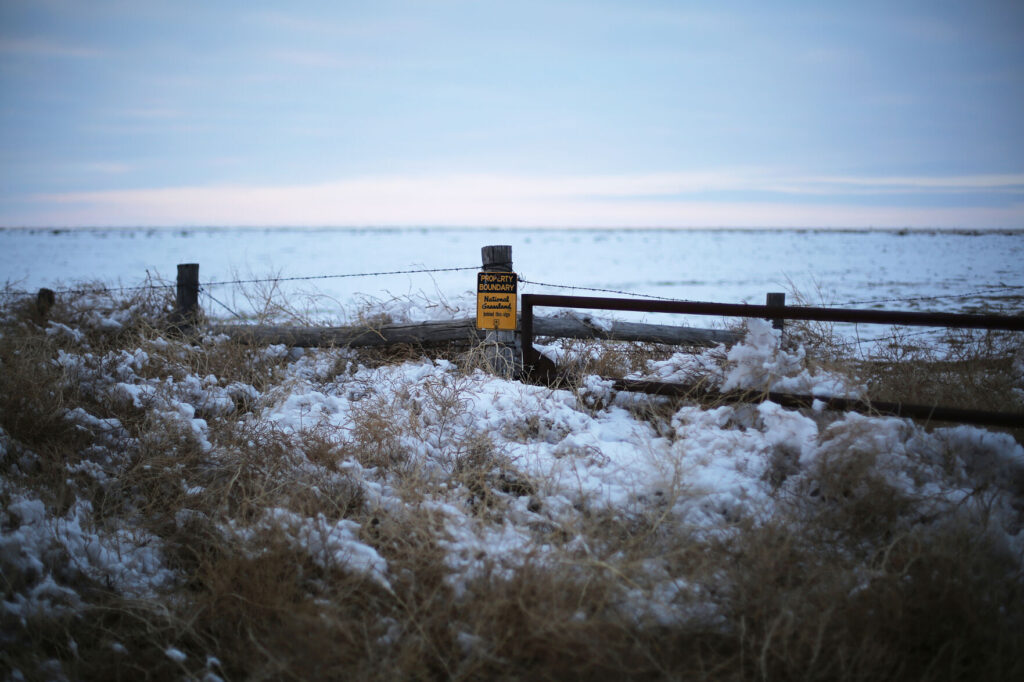Protection set for La Jara Ranch | Gabel


The State Land Board is meeting Oct. 15 to decide the future management of several significant properties, including the 46,000-acre La Jara Ranch in the San Luis Valley. CPW and DNR have partnered with NGOs to permanently protect recreational access and conservation values on the property, a process long in the making.
CPW allocated $5 million in habitat stamp funding to the project, which helped secure more than $40 million in federal funds from the National Land and Water Conservation Fund. If the State Land Board approves the transfer, part of the 46,000 acres will become managed by CPW for a state wildlife area and the balance will be managed by BLM and USFS.
According to the SLB meeting documents, the La Jara property in Conejos County is valued at nearly $50 million and the SLB has pursued efforts to sell the property since 2017 to an end buyer whose future uses align with the Board’s goals for the property. The federal agencies look to acquire 43,526 acres to manage, and CPW’s interest lies in the 2,427-acre reservoir area for which CPW holds a perpetual right of way and manages as a State Wildlife Area (SWA). CPW submitted the sole bid for the purchase of the reservoir section in 2025.
The majority of the 45,950-acre property was acquired by the SLB under the terms of the original land grant, but the Board has also made several smaller acquisitions that increased the size of the original La Jara property over time. These acquisitions include the purchase of approximately 6,250 acres of inholdings and adjacent private lands, and a land-for-land exchange with the federal government that swapped state trust land near the Sand Dunes National Monument for approximately 4,400 acres of BLM land on the southeast side of La Jara.
Currently, there are 11 grazing leases on the La Jara as well as two private recreation leases and numerous rights of way. All told, the leases raise about $254,000 annually. In the June SLB board packet, it was confirmed that all agriculture leases will be terminated by USFS and BLM once the land is transferred, though the ranchers will be allowed to apply for federal grazing permits.
In speaking to local elected officials, it appears there is support for the transfer as the ranchers who currently graze the La Jara have long been in the loop as this transfer has been years in the making. Navigating federal leases is likely more cumbersome, but less so than losing the ability to graze on land a family has grazed and stewarded for generations. Selling to a private buyer and losing public access for recreation, hunting, grazing, fishing, and the like is of great concern to the Board of County Commissioners and in turn, the community.
My initial reaction before digging in a bit was much the same as the multiple ag producers who reached out with skepticism on the minds. The ag community, in my experience, remains cautious of CPW, cautious of USFS and BLM (see last week’s column about the Comanche National Grasslands) and downright untrusting of the Polis administration and specifically SLB director Nicole Rosmarino. After digging around and speaking to those more closely involved, I believe the transfer meets the SLB goals of raising maximum funds for the state’s schools and through state and federal management, it keeps the land available to the public rather than allowing it to sell to someone who will lock the gates and throw away the key. There is great cultural, historical, recreational, and agricultural value on this land and the transfer allows multiple users to continue to access it.
The replacement properties being considered are Summit Springs Draw, a 320-acre property in Logan County that could potentially be designated as a National Historic Landmark and the Chancellor Ranch in Las Animas County, a 21,486-acre property staff indicated has multiple natural values including uniqu canyonland habitat and significant cultural resources. Outside of eastern Colorado, the SLB is considering Nipple Rim in Moffat County, a 19,322-acre property with high potential for rare plant occurrences; Maybell Adjacent Land in Moffat County, a 406-acre property that is a logical addition to existing Trust property; Little La Garita Creek in Saguache County, a 640-acre property that the purchase is supported by local government; and Badger Creek Area (Waugh Mountain) in Park and Fremont Counties, a 30,021-acre property with local support that is adjacent to multiple existing Trust properties.
There has been an HB25-1332 Working Group established to determine diversification of ways to generate revenue from state lands that will meet at the end of October. Additionally, stakeholders should pay mind to the DNR Prairie Dog Interagency Working Group that is tasked with determining where better collaboration and protection of prairie dogs and their habitat is necessary, especially on state lands. If there were ever fighting words, there they are.
Also on the October agenda are statewide changes to grazing leasing, including a formalized rate setting, a lease demand modifier, two-tier pricing structure, stewardship incentives, and subleasing fee clarification. Most changes are mostly clerical, though there will now be the addition of financial incentives “to grazing lessees, such as revenue sharing, to reward the implementation of superior land stewardship and conservation practices that exceed lease requirements.”
Rachel Gabel writes about agriculture and rural issues. She is assistant editor of The Fence Post Magazine, the region’s preeminent agriculture publication.













